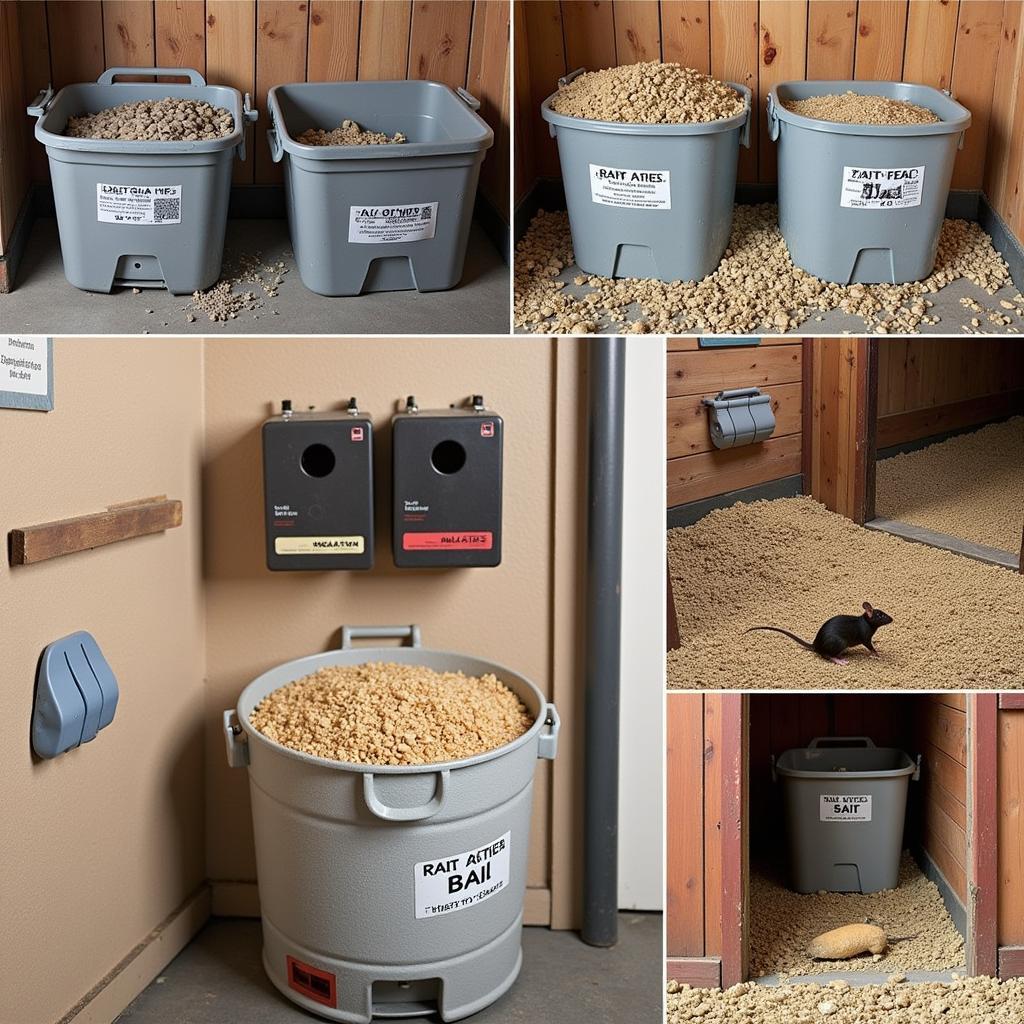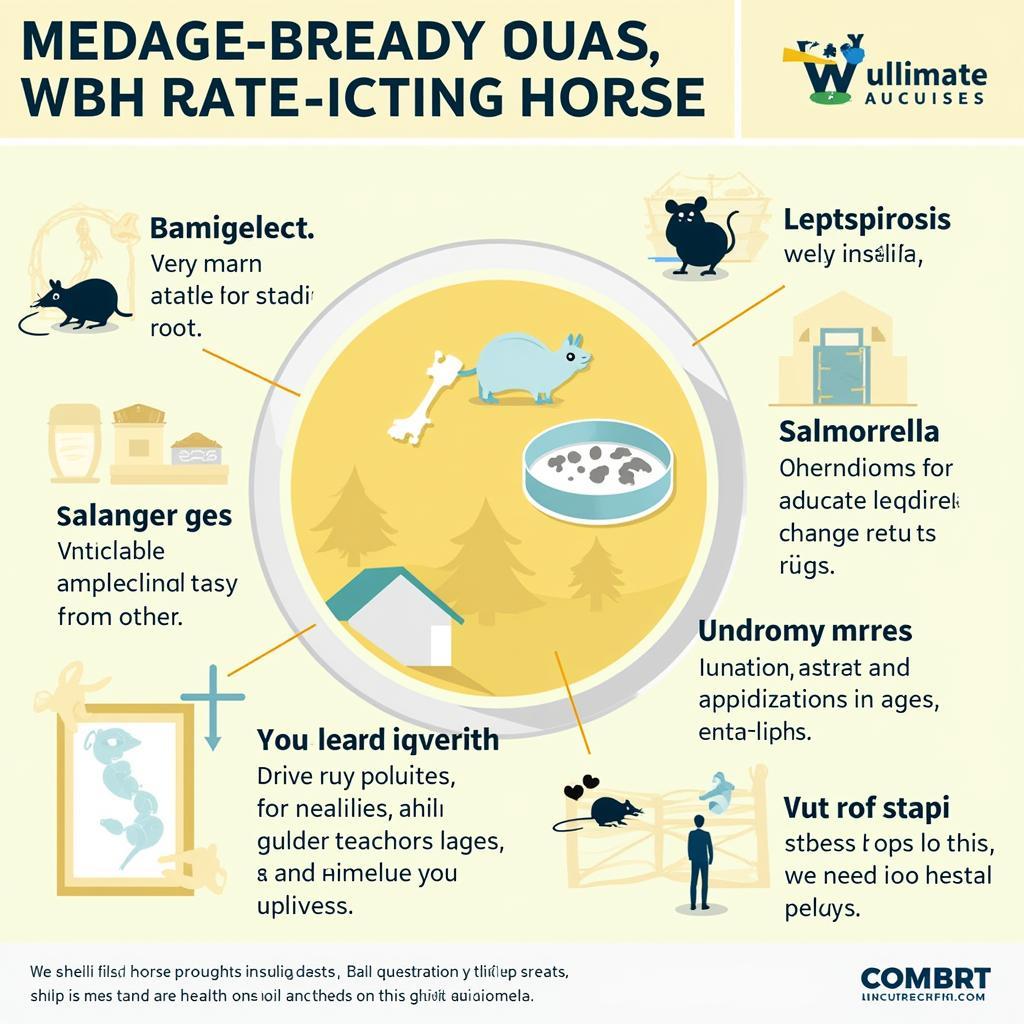Horses and rats. At first glance, these two creatures seem worlds apart. One, a majestic symbol of power and grace, the other often perceived as a pest. But what happens when their paths cross? Understanding their potential interactions is crucial for responsible horse and pet ownership. This article explores the dynamics between horses and rats, focusing on the importance of rat control around stables and the potential health risks for both animals.
Understanding the Risks of Horses and Rats
Rats are drawn to stables by the readily available food source: horse feed, hay, and even manure. This creates an environment ripe for infestation. The presence of rats poses several serious risks to both horses and the stable environment. These risks include the spread of disease, structural damage, and even behavioral issues in horses. For instance, Leptospirosis, a bacterial disease carried by rats, can be transmitted to horses, causing serious illness. Similarly, Salmonella, commonly found in rodent droppings, can contaminate horse feed and lead to digestive problems. Beyond disease, rats gnaw on wood, electrical wiring, and even insulation, causing significant damage to stable structures. This not only creates an unsafe environment but can also lead to costly repairs. horse root
Rat infestations can also create a stressful environment for horses. The constant scurrying and presence of rodents can disrupt their sleep, leading to anxiety and behavioral changes. A stressed horse is more susceptible to illness and may exhibit undesirable behaviors like cribbing or weaving. Therefore, effective rat control is not just about protecting the stable, it’s about ensuring the health and well-being of the horses within it. Understanding these risks is the first step in implementing a successful rodent control program.
Effective Rat Control Around Stables
Implementing a robust rat control program is essential for any stable owner. This involves a multi-pronged approach focusing on sanitation, exclusion, and population control. Firstly, maintaining a clean and tidy stable is paramount. Regularly removing manure, spilled feed, and debris eliminates food sources and makes the environment less attractive to rats. Proper storage of hay and grain in rodent-proof containers is also crucial. Secondly, sealing any cracks or holes in the stable walls and foundations prevents rats from entering. This includes checking windows, doors, and vents for potential entry points.
 Effective Rat Control Measures in Stables
Effective Rat Control Measures in Stables
goats and horses Thirdly, employing various rat control methods, such as traps and bait stations, can help reduce the rat population. When using rodenticides, it is critical to choose products that are safe for horses and other animals and to place them in areas inaccessible to non-target species. Regularly monitoring and maintaining these control measures are crucial for long-term success. Finally, consider natural predators. Barn cats, for instance, can be effective in controlling rodent populations. However, it’s important to ensure the cat is properly vaccinated and cared for and that its presence doesn’t create additional stress for the horses.
Can Rats Hurt Horses?
While a direct attack from a rat on a horse is rare, the indirect consequences of a rat infestation can significantly impact a horse’s health. As mentioned earlier, rats carry diseases that can be transmitted to horses through contaminated feed, water, or bedding. They can also cause structural damage to stables, creating potential hazards for horses.
horses watering spot crossword Furthermore, the stress caused by a rat infestation can negatively affect a horse’s behavior and overall well-being. Therefore, while a rat might not physically harm a horse, the presence of rats creates a dangerous environment that can indirectly lead to various health and behavioral issues.
 Health Risks of Rats to Horses
Health Risks of Rats to Horses
Conclusion
The coexistence of horses and rats in a stable environment presents significant challenges for horse owners. Understanding the risks associated with rat infestations and implementing effective control measures are crucial for ensuring the health, safety, and well-being of your horses. By prioritizing sanitation, exclusion, and population control, you can create a safe and healthy environment for your equine companions. Regular monitoring and proactive measures are key to preventing rat infestations and protecting your horses from the potential dangers they pose. Remember, a rat-free stable is a happy and healthy stable. gold cup morgan horse show
FAQ
- What diseases can horses get from rats? Leptospirosis and Salmonella are two common examples.
- How can I prevent rats in my stable? Maintain cleanliness, seal entry points, and use traps or bait stations.
- Are barn cats effective for rat control? Yes, but ensure they are vaccinated and don’t stress the horses.
- Can rats bite horses? While rare, it’s possible. The bigger concern is disease transmission.
- What should I do if I find rat droppings in my stable? Immediately clean the area and implement control measures.
- What are the signs of a rat infestation? Droppings, gnaw marks, and unusual noises are common indicators.
- Can rats damage my stable? Yes, they can gnaw on wood, wiring, and insulation.
Scenarios
- Scenario 1: You notice droppings and gnaw marks in your feed room. This suggests a possible rat infestation, and you should immediately implement control measures.
- Scenario 2: Your horse is exhibiting signs of stress, like cribbing or weaving. Consider a rat infestation as a potential cause.
- Scenario 3: You find a dead rat in your stable. This is a clear sign of infestation, and you should take action immediately.
Further Exploration
For more information on horse care and stable management, visit our articles on Horse Root and Goats and Horses.
Call to Action
For assistance with horse and pet care, contact us at Phone Number: 0772127271, Email: [email protected] or visit our address: QGM2+WX2, Vị Trung, Vị Thuỷ, Hậu Giang, Việt Nam. We have a 24/7 customer service team.